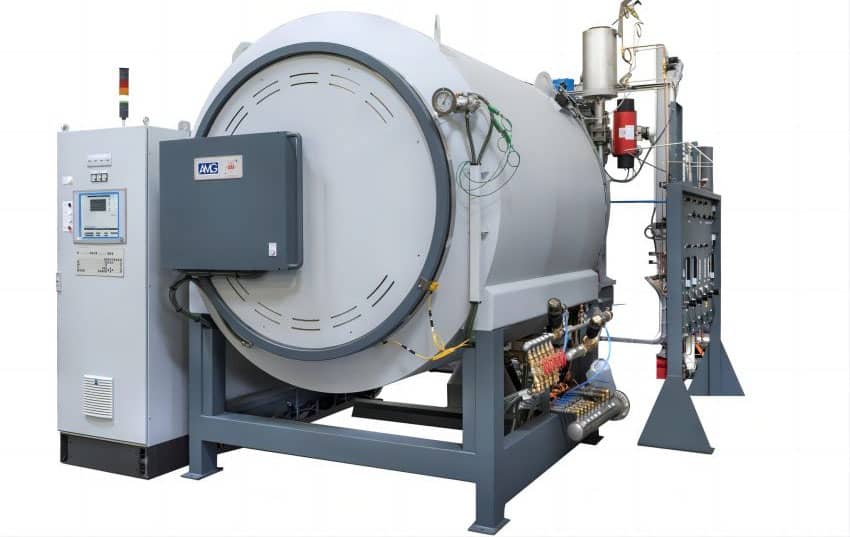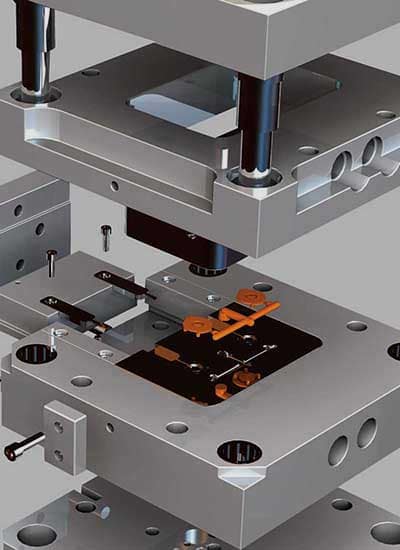Enhancing Mold Performance: Why Nitriding is Essential for Plastic Injection Molds
Introduction
Nitriding plastic molds before shipment is an essential practice. Some customers question this treatment, noting that it turns the mold black and appears unappealing. However, nitriding significantly enhances the wear resistance, surface hardness, fatigue limit, and corrosion resistance of mold steel, thereby extending the mold’s lifespan.

Benefits of Nitriding Plastic Molds
- Enhancing Durability and Wear Resistance
Challenges Faced During Injection Molding Process
Plastic molds in the injection molding process must endure high temperatures, immense pressure, and chemically reactive plastics. These conditions subject molds to constant strain, leading to inevitable wear and tear.
Wear and Tear on Mold Surface
The harsh conditions encountered during moulding cycles cause gradual erosion, compromising mould integrity and affecting the quality of moulded products.
Nitriding Process and Its Role in Improving Mold Durability
Nitriding, which involves exposing the mold to nitrogen gas at elevated temperatures, transforms the mold surface, creating a complex and wear-resistant layer.
Enhancement of Surface Hardness and Wear Resistance
Nitriding significantly increases the surface hardness of plastic injection molds, enabling them to withstand mechanical stresses and prolonging their lifespan. This process also enhances the mold’s resistance to wear, maintaining its shape and integrity over time.
Emphasis on Nitriding’s Role in Corrosion Resistance
Nitriding also provides formidable defense against corrosion. The nitrogen-rich surface layer protects the mold from chemical reactions with molten plastic and other corrosive elements, which is crucial when working with aggressive plastic materials or in high-humidity or chemical-exposure environments.
- Improved Surface Finish
Contribution of Nitriding to Smoother and More Precise Surface Finishes
Nitriding contributes to the aesthetics and functionality of the final product. Molds treated with nitriding can produce items with smoother and more precise surface finishes, resulting in superior quality in appearance and function.
Relevance of Precise Surface Finishes in Various Industries
Precise surface finishes are critical across several industries, such as consumer electronics and medical devices, where aesthetics and precision are paramount. Nitriding ensures molds deliver high-quality products that meet industry standards and customer expectations.
The Nitriding Process
- Nitriding Techniques
Exploring Various Nitriding Techniques
There are several nitriding techniques, each with distinct advantages:
-
- Gas Nitriding: This method heats the mold in a nitrogen-enriched environment, promoting nitrogen diffusion into the mold’s surface and forming a hardened layer. It is renowned for improving wear and corrosion resistance.
- Plasma Nitriding: Utilizes a high-power diode laser to create a hardened layer on the mold’s surface. This technique offers high precision and control, allowing specific areas of the mold to be treated as needed. It is suitable for applications demanding extreme performance.
Comparison Summary
| Aspect | Gas Nitriding | Plasma Nitriding |
| Process | Nitrogen gas diffusion at elevated temperatures | Nitrogen ion embedding in a plasma field |
| Temperature Range | 500-550°C | 400-600°C |
| Atmosphere | Ammonia (NH3)
Uses ammonia (NH3) as the nitrogen source. |
Nitrogen or nitrogen-hydrogen mixture |
| Control | Less precise | Highly precise |
| Uniformity | Uniform surface hardening | Selective hardening possible |
| Surface Preparation | Requires thorough preparation | Less intensive preparation required |
| Cost | More cost-effective | Higher cost due to specialized equipment |
| Distortion | Potential for greater distortion | Minimal distortion |
| Environmental Impact | Uses more ammonia, less environmentally friendly | More environmentally friendly |
Highlighting the Differences Between Techniques and Their Applications
The choice between gas nitriding and plasma nitriding depends on specific application requirements:
- Gas Nitriding: Cost-effective and broadly applicable, suitable for overall wear and corrosion resistance improvement.
- Plasma Nitriding is preferred for intricate mold designs or selective surface hardening, achieving high hardness and superior wear resistance.
Benefits of Using High-Power Diode Lasers in Plasma Nitriding
High-power diode lasers in plasma nitriding offer several key advantages:
- Precision: Enables selective treatment of mold surfaces.
- Efficiency: Minimizes waste and reduces operational costs.
- Reduced Distortion: Preserves the mold’s integrity by minimizing distortion during nitriding.
Surface Treatments and Coatings Technology
Relationship Between Nitriding and Surface and Coatings Technology
Nitriding is crucial in surface and coatings technology by enhancing surface properties such as hardness and wear resistance.
Alteration of Chemical Composition During Nitriding
Nitriding alters the mold’s chemical composition, creating a nitride layer that improves mechanical properties, particularly hardness, enabling the mold to withstand wear, corrosion, and mechanical stress.
How Nitriding Minimizes Distortion and Preserves Mold Integrity
Nitriding minimizes distortion, especially in plasma nitriding with high-power diode lasers, preserving the mold’s integrity, which is crucial for precision and consistency.
Conclusion
Nitriding is indispensable in modern manufacturing, enhancing mold durability, wear resistance, and corrosion resistance while ensuring high-quality surface finishes. By aligning with materials science principles, nitriding transforms plastic mold steel, improving performance and extending mold life, ensuring products meet the highest standards of excellence and reliability.













